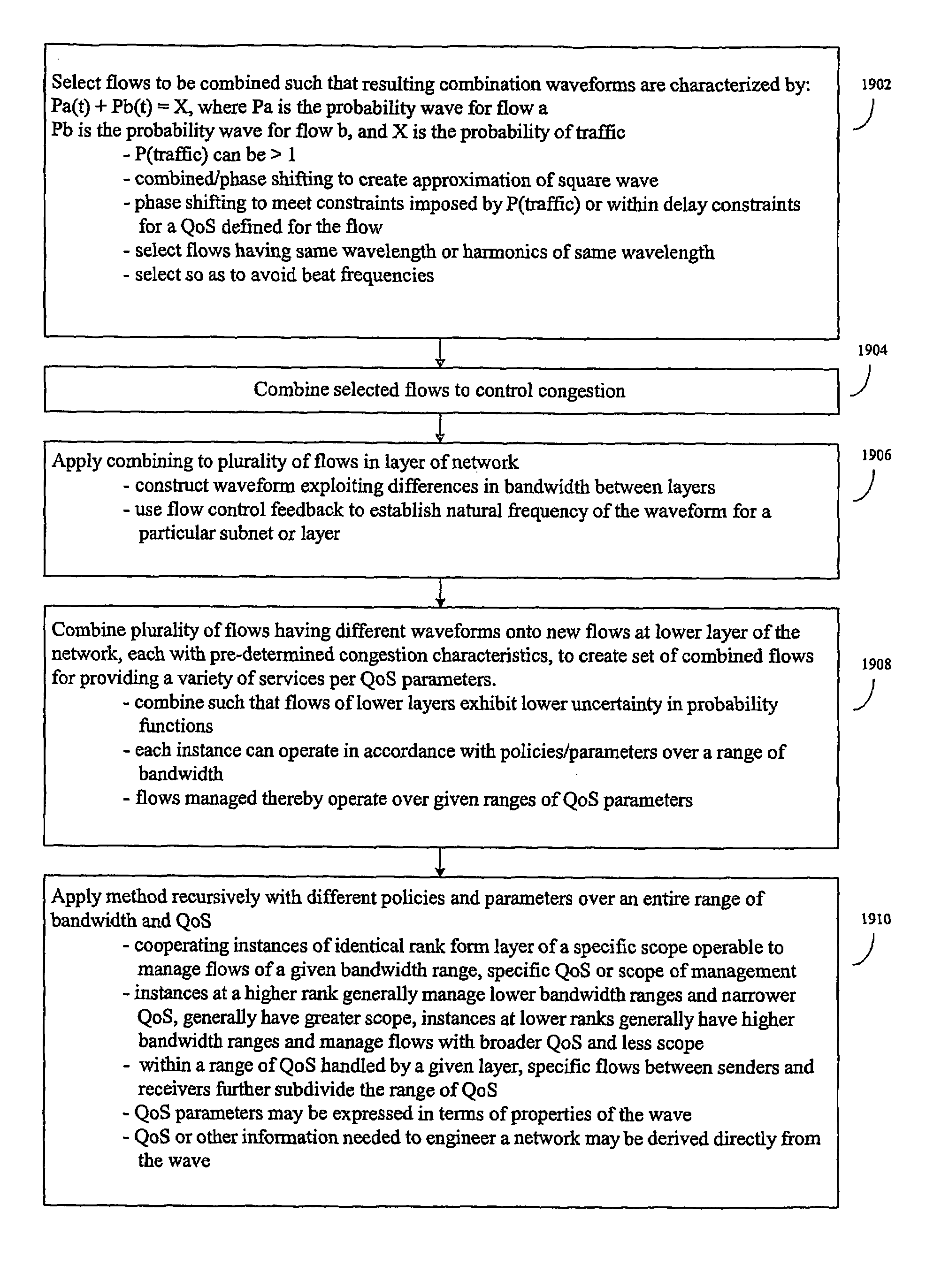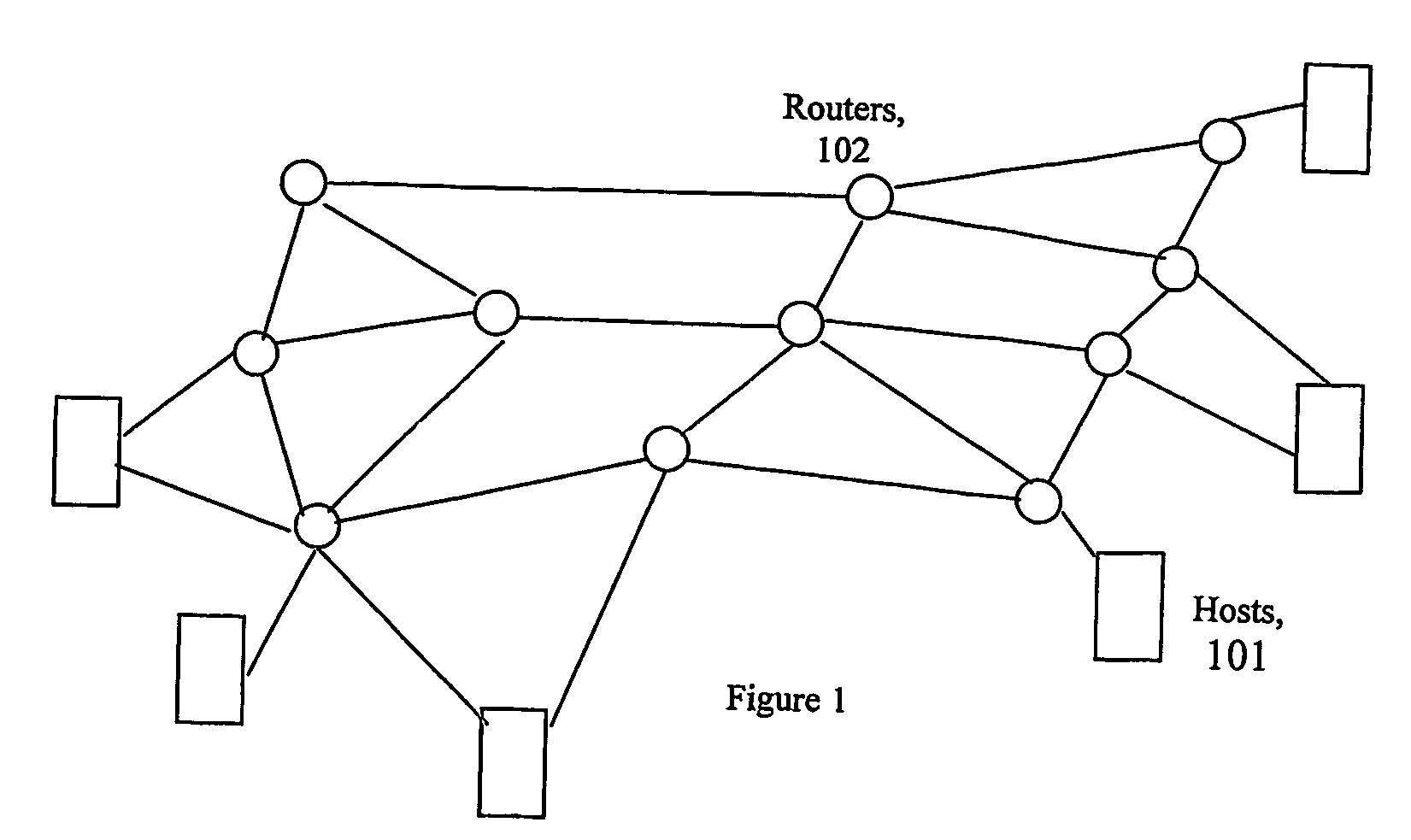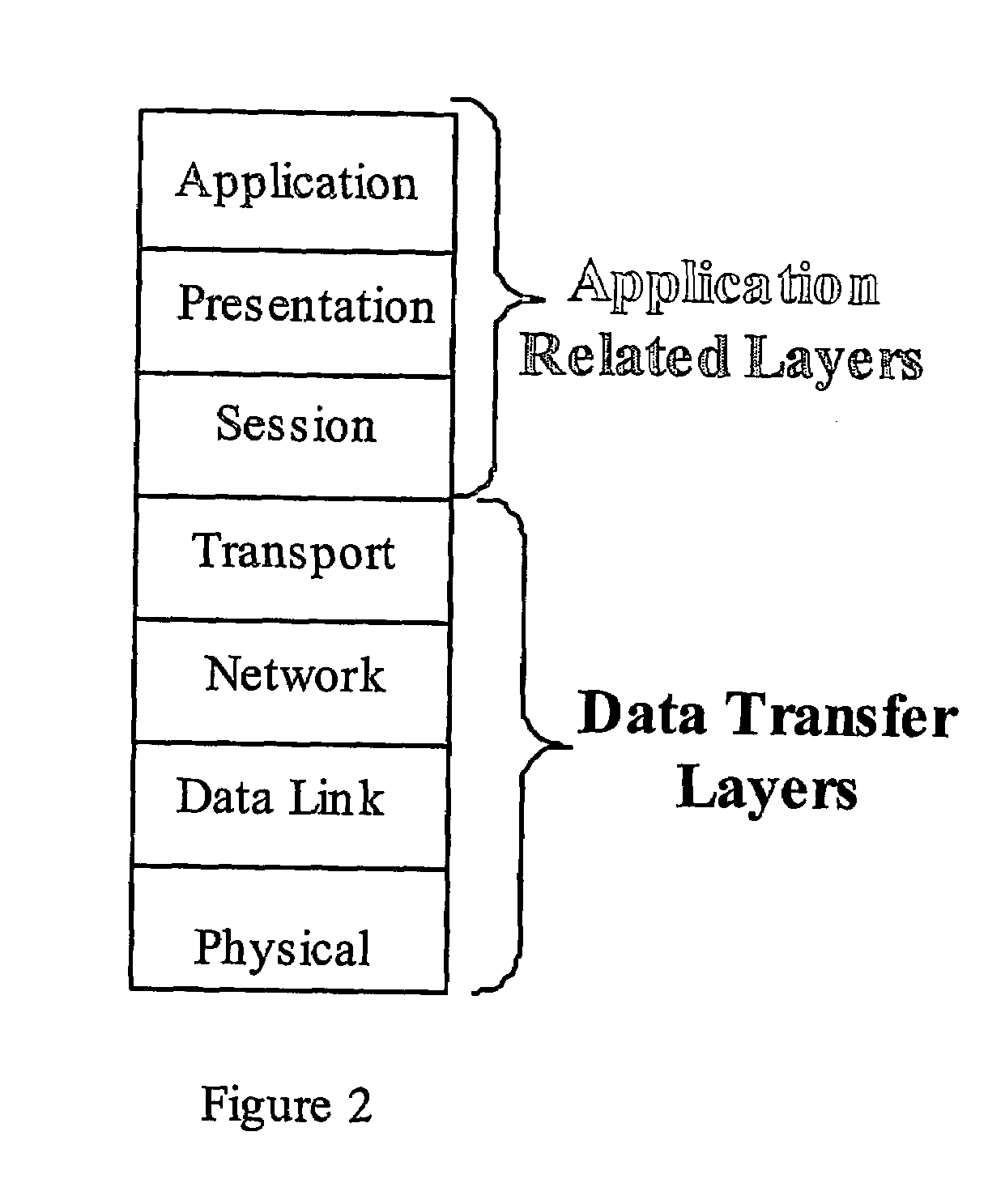Mutiplexing and congestion control
a technology of congestion control and multi-plexing, applied in the field of digital networks, can solve problems such as difficulty in ensuring agreement between providers, no satisfactory solutions, and prior art suffering
- Summary
- Abstract
- Description
- Claims
- Application Information
AI Technical Summary
Benefits of technology
Problems solved by technology
Method used
Image
Examples
Embodiment Construction
Overview
[0032]The invention described herein provides methods and systems, which can be implemented in otherwise conventional digital processing networks (whether for data, voice, VoIP, or any other type of information, signals or data), for improving information transfer within and across such networks. Before embarking upon a description of the illustrated embodiments, we first provide an overview of Quality of Service (QoS) and related network issues, which are addressed by the present invention in the context of what can be otherwise conventional digital network environments, like those schematically depicted in FIG. 1 (a schematic diagram of a typical computer network consisting of routers 102 and interconnecting hosts 101 in communication via communications links represented by lines in FIG. 1) and FIG. 2 (a schematic diagram illustrating the conventional layered model of networks with data transfer layers (physical, data link, network and transport layers) and application-rel...
PUM
 Login to View More
Login to View More Abstract
Description
Claims
Application Information
 Login to View More
Login to View More - R&D
- Intellectual Property
- Life Sciences
- Materials
- Tech Scout
- Unparalleled Data Quality
- Higher Quality Content
- 60% Fewer Hallucinations
Browse by: Latest US Patents, China's latest patents, Technical Efficacy Thesaurus, Application Domain, Technology Topic, Popular Technical Reports.
© 2025 PatSnap. All rights reserved.Legal|Privacy policy|Modern Slavery Act Transparency Statement|Sitemap|About US| Contact US: help@patsnap.com



